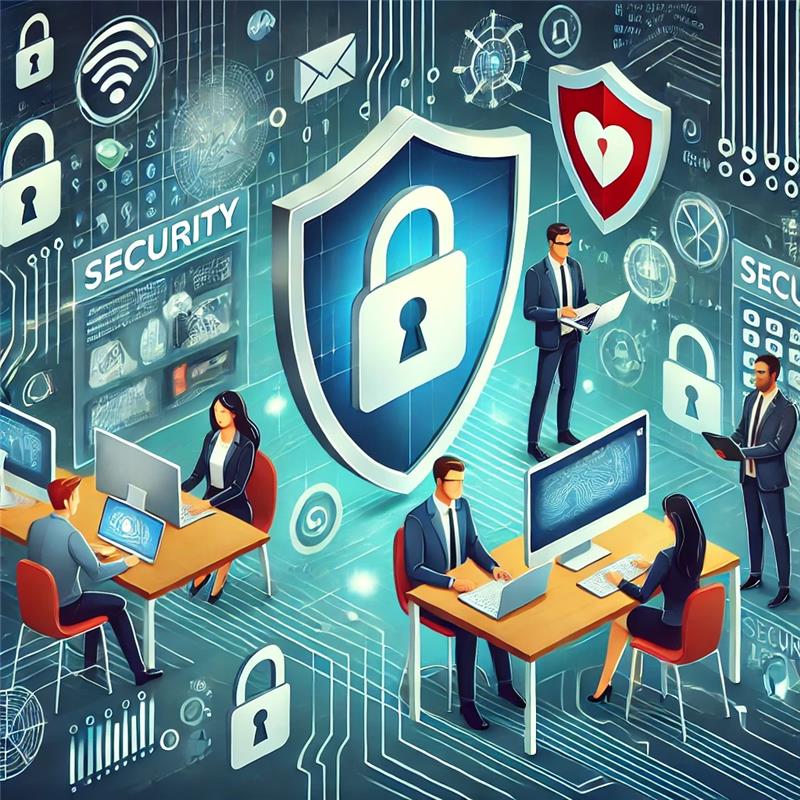

In an increasingly digital world, small and medium-sized businesses (SMEs) face a growing challenge: protecting their data and systems from cyberattacks. It's often believed that cybercriminals only target large corporations, but the reality is that SMEs are a frequent target due to their limited security resources. Below, we'll explore cybersecurity best practices that can help SMEs effectively protect themselves.
1. Staff Education and Awareness
One of the first lines of defense against cyberattacks is staff training. Employees should be aware of common threats, such as phishing, and how to identify them. Some recommendations include:
Regular training: Schedule cybersecurity training sessions for all staff.
Phishing Simulations: Conduct internal tests to assess staff response to potential attacks.
Clear technology use policies: Establish regulations regarding the secure use of company devices and networks.
2. Implementation of Security Software
Using security software is crucial to detecting and preventing threats. SMEs should consider:
Antivirus and Antimalware: Install and keep up-to-date good antivirus and antimalware software on all devices.
Firewalls: Configure firewalls to protect internal networks from unauthorized access.
Email Filtering: Implement filters to block suspicious or malicious emails before they reach employees.
3. Regular Backups and Recovery Plans
Ensuring critical data is protected from potential loss or attacks is essential. Some best practices include:
Automated Backups: Schedule automatic backups of all important data to a secure location, preferably in the cloud and off your main network.
Restore Testing: Perform periodic data recovery tests to ensure that backups are working properly.
Business continuity plans: Develop an incident response plan to ensure the business can continue operating in the event of a cyberattack.
4. Password Management
Passwords are the first barrier against unauthorized access. To improve their effectiveness, SMEs should:
Strong passwords: Require the use of strong passwords that include a combination of letters, numbers, and symbols.
Two-factor authentication (2FA): Implement two-factor authentication to add an extra layer of security.
Password Managers: Use password managers to ensure that unique and strong passwords are used for each application.
5. Regular Update of Systems and Software
Cybercriminals often exploit vulnerabilities in outdated software. SMEs should ensure:
Keep all software up to date: Install security updates and patches as soon as they become available.
Constant monitoring: Implement a monitoring system to proactively identify and manage vulnerabilities.
6. Protection of Networks and Mobile Devices
With the rise of remote work and mobile device usage, it's critical for SMBs to protect their networks and devices:
Virtual Private Networks (VPNs): Use VPNs to secure remote connections.
Mobile Security: Implement security policies for mobile devices accessing the company network.
Network segmentation: Dividing the network into segments to limit access and contain potential security breaches.
7. Regulatory Compliance
Finally, it is crucial that SMEs comply with the cybersecurity regulations applicable to their sector and geographic location:
GDPR and other regulations: Ensure compliance with data protection regulations, such as the General Data Protection Regulation (GDPR) in Europe.
Security audits: Conduct periodic security audits to identify and correct vulnerabilities.

Cybersecurity isn't just a challenge for large corporations; SMEs must also take proactive measures to protect their data and systems. By implementing these best practices, small and medium-sized businesses can significantly reduce their risk of cyberattacks and ensure business continuity in today's digital environment.
Categories: Cybersecurity

How cloud solutions are revolutionising SMEs
Oct 2, 2024 | Uncategorized
In the digital age, small and medium-sized enterprises (SMEs) face the challenge of staying competitive in a constantly changing environment. To achieve this, they need technological tools that allow them to improve efficiency, reduce costs, and adapt...

The Importance of Continuous Training in the Implementation of Technological Solutions
Aug 22, 2024 | Consulting
In the fast-paced world of technology, where innovation and change are constant, continuous training has become an essential pillar for the success of organisations. Adopting new technologies is not just a matter of updating equipment or software; it involves a comprehensive process where the human factor plays a decisive role. In this context, training takes on unparalleled significance to ensure

The Importance of a Reliable Technology Partner in the Implementation of IT Solutions
Aug 16, 2024 | Cybersecurity, Consulting
In an increasingly digital world, where technology advances at a rapid pace, companies face the constant challenge of staying current and innovating to stay ahead of the curve. In this context, the implementation of IT (Information Technology) solutions...